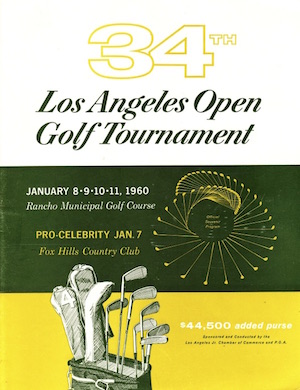
For the sixth Los Angeles Open at Rancho (Park) in 1960, Tournament Director Gene Whitlock allowed the golf course to be re-routed. For the previous five years, the course was played with the nines reversed, but in 1960, while still starting on the back-nine 10th tee, the round finished on today’s par-five 4th hole!
The round started on our 10 (#1), but after 17 (#8), they played 9 (#9), and then played 5 (#10,) through 8 (#13), followed by 18 (#14), 1 (#15), 2 (#16), 3 (#17), and finally 4 (#18)!
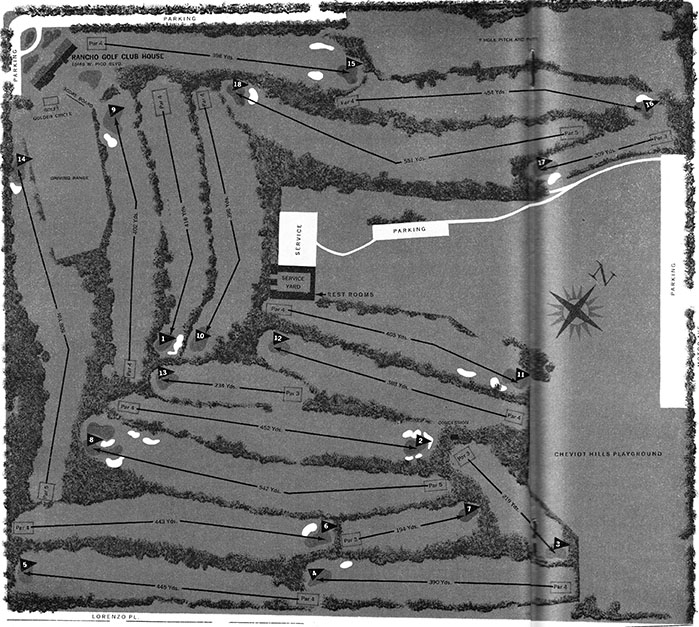
The long walk from the 8th green (#13), to the 18th tee (#14) must have been fun!
“There are shots from that first tee (#15), that go into the gallery at the 4th #(18), and those bleachers alongside 4th (#18) green are going to get a lot of the second shots on that hole.” said Dow Finsterwald in the Los Angeles Times.
Harvey Raynor of the P.G.A., said that the field was the best ever assembled for a Professional Golfer’s event, with 58 winners of PGA tournaments playing.
1960 was the year that California Attorney General Stanley Mosk told the PGA to remove their caucasian-only-clause, if they were going to hold tournaments on public golf courses in the State. Mosk learned about the rule while playing golf with band leader Billy Eckstine and future L.A. Open winner Charlie Sifford, next door, at Hillcrest Country Club.
Ohio University graduate Dow Finsterwald went on to win the rain delayed 1960 Open with 280, after Hillcrest C.C. teaching pro Eric Monti collapsed and shot 80 in the fourth round, having led the first three days!
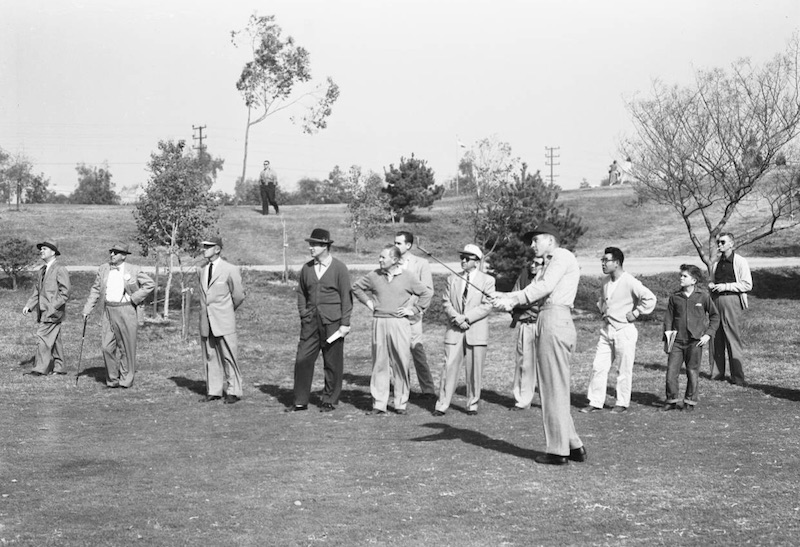
Other moments of madness in 1960 involved the USGA changing “stroke and distance” to “distance only” for a Ball Out of Bounds.
I wonder if the eleven holes on Rancho with out of bounds helped sway their decision? Too bad they didn’t keep the rule for 1961 when Arnold Palmer took his 12 at the 18th!
During 1960, clubs could also enact a local rule allowing players to take a drop near the point that the ball went into a hazard or out of bounds, and add a stoke. The Southern California Golf Association continued the distance-only rule through 1961.
And to make matters more interesting, 1960 was the year of the lively new balls that allowed Mr Palmer to reach the 346-yd. first green at Cherry Hills in the U.S. Open, and also when a seven-handicapper, on the old Roosevelt links in Griffith Park, drove three par-4 greens, and put “a billion and half dollars worth of golf courses in the country” in peril. Sound like today? It was reported at the time that Mr. Palmer actually won the 1960 Masters with a banned ball…
On the brighter side, 29-year old Barbara Eden was LA Open Queen for 1960! Here she is in Jimmy Thompson’s pro shop with L.A. Junior Chamber of Commerce President Bob Meyer.
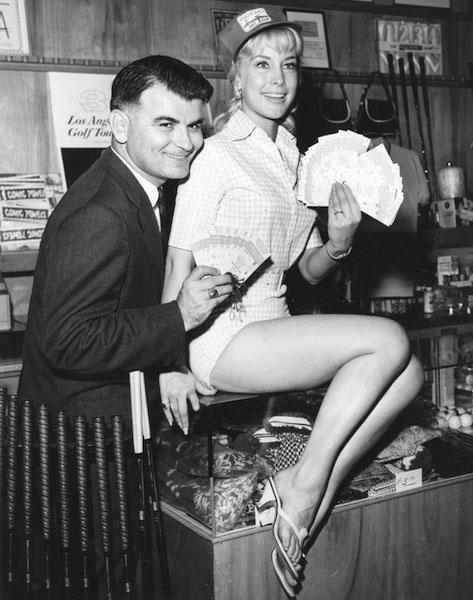
©2016 J.I.B. Jones and the Golf Historical Society.
All Rights reserved.

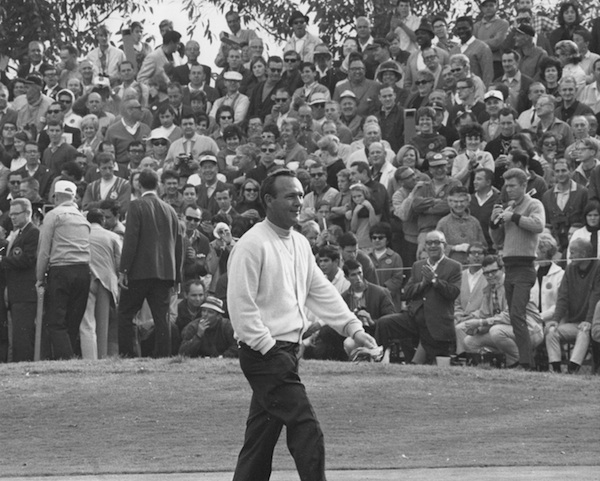
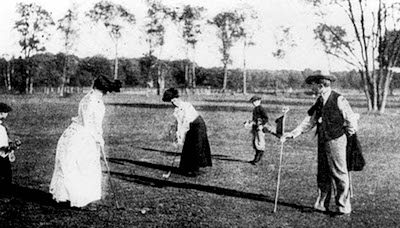
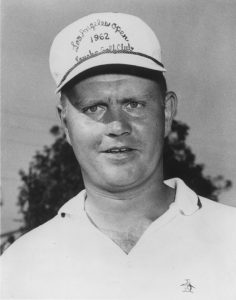
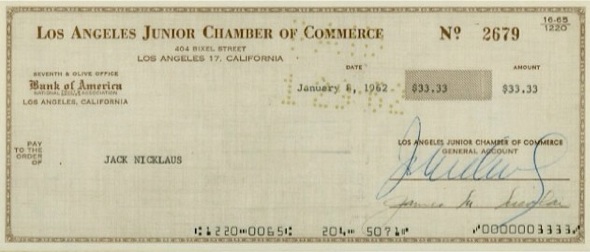 Twenty three year old Phil Rodgers won the 1962 tournament with a 67-71-68-62 – 268, nine shots in front of the field, and a record low for the L.A. Open’s played at Rancho. (Lanny Wadkins 264 at Riviera in 1985 is the record low for all L.A. Open’s)
Twenty three year old Phil Rodgers won the 1962 tournament with a 67-71-68-62 – 268, nine shots in front of the field, and a record low for the L.A. Open’s played at Rancho. (Lanny Wadkins 264 at Riviera in 1985 is the record low for all L.A. Open’s)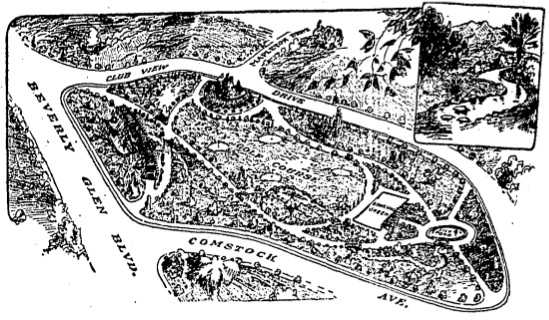
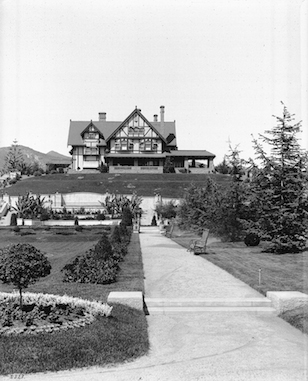
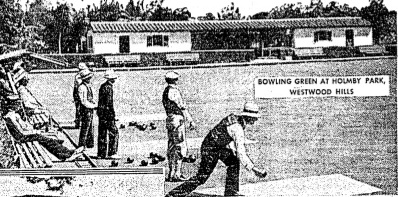
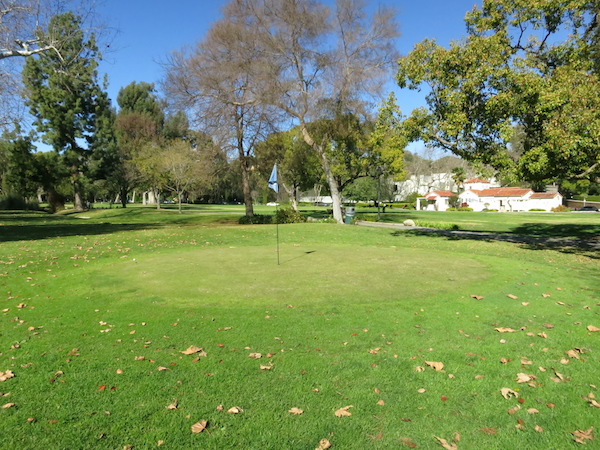
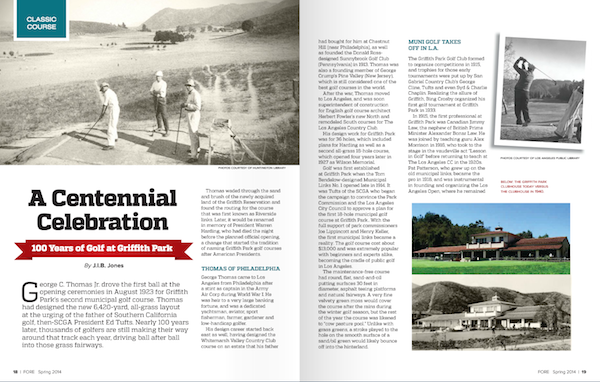
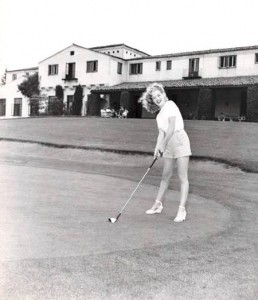
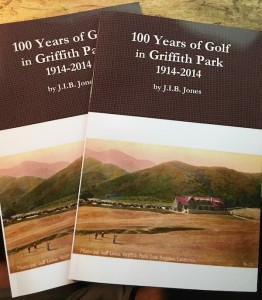
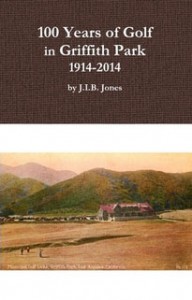 100 Years of Golf in Griffith Park, 1914-2014 by J.I.B. Jones
100 Years of Golf in Griffith Park, 1914-2014 by J.I.B. Jones